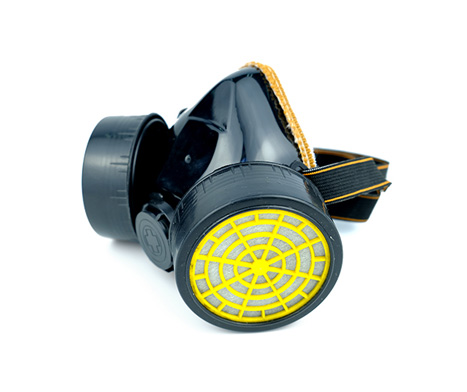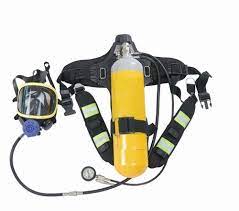Taking precautions to protect yourself may be one of your top priorities when working in an environment where you can inhale hazardous substances or when working with hazardous materials. A respirator is a piece of personal protective equipment (PPE) worn on your face that provides protection for working in environments that endanger your respiratory health.
When looking for a respirator, you need to understand the dangers you will face. Not all respirators are created equal. There are many types of respirators, and each type of respirator has certain hazards that are better suited to handling. Choosing the right type of respirator is critical to safety.
In order to provide better respiratory protection for yourself, it is important to understand the different types of respirators. Respirators prevent respiratory hazards by removing specific air pollutants from the ambient air or by providing breathable air from a safe source.

Air purifying respirator (APR): Respirators that remove air pollutants from the surrounding environment are called "air-purifying respirators." Air purifying respirators remove pollutants from the air you breathe by filtering out particulates such as dust, metal smoke, fog, etc. A particulate respirator is a respirator that purifies the air. The part of the respirator that forms a protective barrier between air pollutants and the user's respiratory tract is called an inhalation mask. Most entrance coverings come in either a tight or loose fit.
- Tight breathing apparatus: Tight breathing apparatus has an entry covering, also known as a face piece or mask, designed to form a seal with the wearer's face. It comes in three types: a quarter mask (covering the nose and mouth), a half mask (covering the nose to the chin), and a full mask (covering above the eyes to below the chin).
- Loose-fitting respirators: Loose-fitting respirators have an entry mask that usually covers the user's head and may extend to the shoulders. It is designed to form a partial seal on the face. This includes loose-fitting masks, as well as hoods, helmets, or full suits, all of which can completely cover the head.
Examples of air-purifying respirators:
Particulate matter protective mask
Gas mask (contains more adsorbents than cartridge masks, providing a higher level of protection than chemical cartridge masks)
Chemical cartridge respirator: The chemical cartridge can be used in combination with a dust prefilter. This combination can resist various pollutants in the air
Power Purifying Respirator (PAPR)

Air-fed breathing apparatus (SAR) :
Fed breathing apparatus (SAR): Fed breathing apparatus (SAR) supplies clean air from a compressed air tank or through an airline. This air is not coming from the studio area. There are two types of fed breathing apparatus: fed breathing apparatus (SAR) and self-contained breathing apparatus (SCBA).
-A fed respirator (SAR) (also called an aero respirator): Receiving air through a connected hose. The air source is an air compressor or a pressurized cylinder. Because employees do not carry air on their backs when using SAR, they can breathe air for a longer period of time than when using SCBA.
-Self-contained breathing apparatus (SCBA) device: Air is supplied from tanks (compressed air or oxygen). For this type of respirator, the breathing air source is designed to be transported by or with the equipment user.
Example of an air-fed respirator (SAR) :
Self-contained breathing apparatus (SCBA)
The airline supplies air breathers
Protective clothing that completely wraps the wearer's body and contains life support systems
According to the respiratory risk in the working environment choose the appropriate type of respirator, in order to better play a respiratory protection role. T-safety provides you with different types of respirators, please contact us for more information.
Copyright © Hebei Sinotools Industrial Co.,Ltd. All Rights Reserved | Powered by  Sitemap
Sitemap